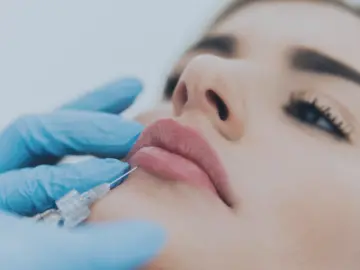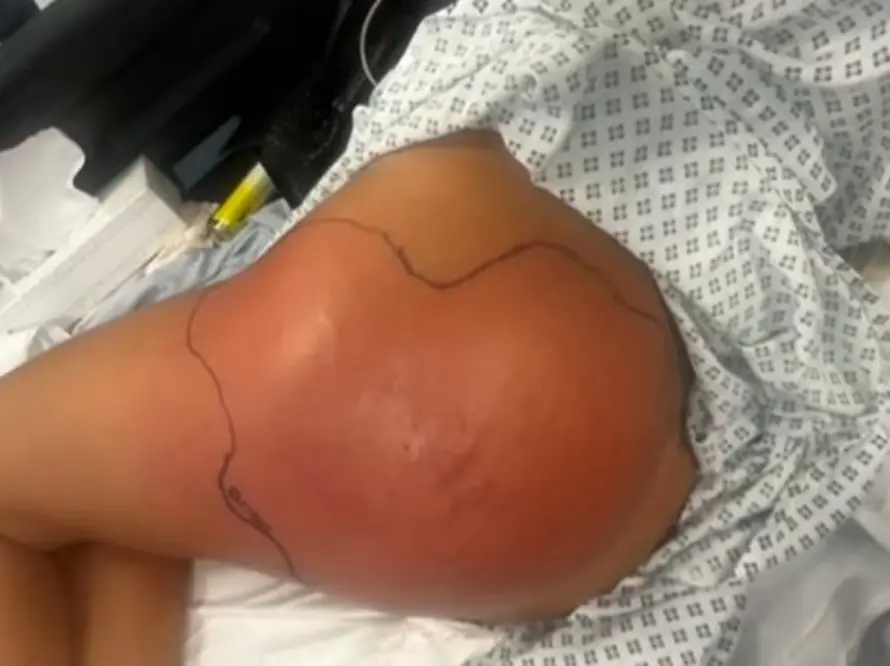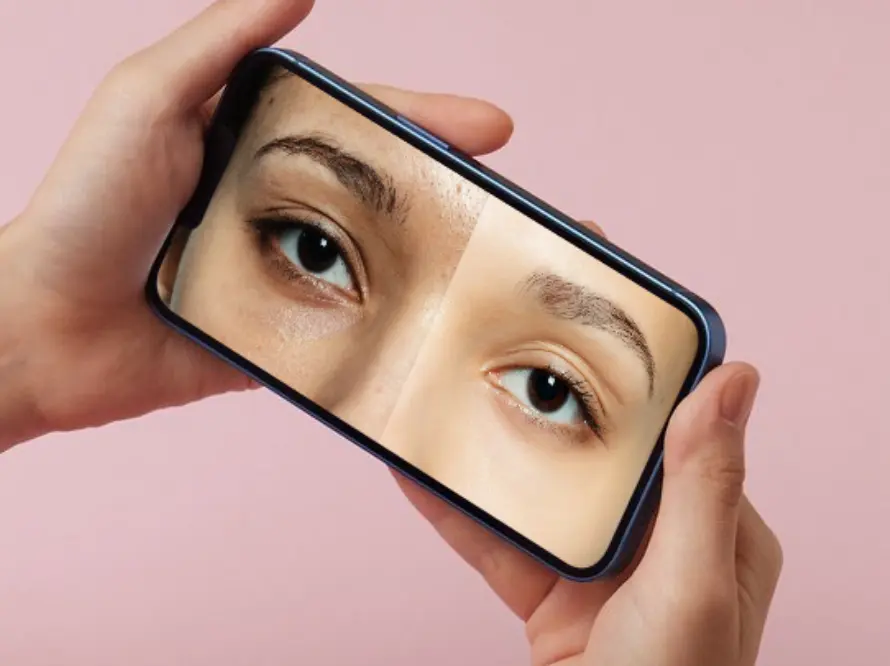70% of Save Face members report fewer patients seeking hyaluronic acid-based dermal fillers as a frontline anti-ageing solution.
For the last forty years, soft tissue dermal fillers have been a mainstay cosmetic injectable in the armamentarium of dermatologists and medical aesthetic practitioners. The technology has evolved from pioneering collagen-based products launched in the 1980s to the dominance of temporary hyaluronic acid (HA) gel-based products, first introduced in the 1990s.
Over the last few decades, we have seen an exponential rise in product brands, rheological technologies developed for stabilising and cross-linking hyaluronic acid molecules of differing weights into varying gels, and the number of differentiations within a product range targeted for varying indications and injection depths. Additional active ingredients, including calcium hydroxylapatite, poly-lactic acid, and polycaprolactone, have been introduced, broadening the dermal filler category from volumisation to collagen stimulation. The development of injection techniques to contour, line fill, support, and augment soft tissue has been based on continual evolution in facial anatomical understanding. Significant advancements have occurred in soft tissue fillers over the past four and a half decades.
ResearchandMarkets.com noted, “The trend of customization and personalization in dermal fillers reflects a shift in patient preferences toward treatments that cater to unique needs and desires. Traditionally, dermal fillers were viewed as a one-size-fits-all solution...In response to this demand, manufacturers develop dermal filler products with a wider range of options, allowing practitioners to choose formulations that best suit each patient.”[i]
In 2024, the UK dermal filler market was estimated to be worth $0.44 billion (U.S. dollars), approximately £0.34 billion (pounds sterling), with an expected growth rate of 15% between 2025 and 2035.[ii] Alongside neurotoxins, HA fillers have enjoyed being the go-to anti-ageing and restorative option, but things could be changing.
Fears abound over the safety of HA fillers, in terms of the products themselves, with many inferior, generic formulations and counterfeits in circulation, and the risk of complications, given the proliferation of practising practitioners delivering treatment with varying skills and medical knowledge, thanks to the largely unregulated nature of the UK aesthetic sector
Hindsight has also shown that a love affair with injectable HA gels has likely led to a trend for overfilled faces - often touted as ‘pillow faces’, with their overuse linked to the unnatural, puffy appearance and facial asymmetries in some celebrities - now coined in published literature as Facial Overfilled Syndrome.[iii] Despite hyaluronic acid having a limited lifespan – the temporary characteristic which generated so much repeat filler injection business – we now have an increased understanding of the migratory potential and longevity of the molecules in their varying mixes and rheology. Magnetic resonance imaging (MRI) studies have proven that some gels hang around in soft tissue longer than previously thought.[iv]
This new understanding appears to have seeped into patient knowledge, and many, particularly older cohorts with a history of prolonged filler use, have become more cautious about looking overfilled after repeat intervention. In some cases, and thanks to the unique ability to dissolve HA-based products with hyaluronidase, there has been a rise in requests for the dissolution of ‘old work’ to make way for a ‘fresh start’.[v]
Patients are embracing new thinking and moving towards enduring and regenerative approaches to facial rejuvenation. These offer holistic anti-ageing, focused on healing from within through collagen stimulation and cellular-level improvements to skin health using DNA fragments, bio-stimulators, platelet-rich plasma, energy-based devices, and semi-permanent or longer-lasting soft tissue implants, rather than reliance on symptom correction with temporary HA-based volumisation. Even plastic surgeons are piping up to decry dermal fillers and hail a return to longer-lasting surgical solutions, highlighting the innovations made in modern approaches to brow lifts and facelifts.[vi]
Of 193 Save Face members who completed a recent survey, 70% reported experiencing fewer patients requesting HA-based dermal filler treatments. Delving deeper, we discovered that patients within the 34 to 57 age range were the main cohort altering their aesthetic treatment preferences away from HA fillers.
When asking respondents about the perceived drivers for this behaviour change, although speculative and anecdotal, high-ranking factors included:
- A desire for regenerative solutions that stimulate natural body repair for rejuvenation (49%),
- being concerned about looking overfilled, puffy, or unnatural with fillers (46%),
- wanting more subtle results with less volume for more age-appropriate outcomes (36%),
- stories in the media with influencers and celebrities turning their back on fillers or having them ‘dissolved’ (22%),
- being concerned about treatment complications or the quality and safety of the filler products (21%),
- a past bad experience with a poor outcome, either product- or practitioner-related (19%),
- And being budget-conscious due to the current cost of living crisis (17%).
However, respondents reported these patients are not ditching cosmetic injectables completely but shifting their preference towards other injectable agents like polynucleotides and biostimulators, e.g., Profhilo, Sculptra, Ellanse, Radiesse, and HArmonyCA.
However, research commissioned by Teoxane, the maker of Teosyal, surveyed 2,500 women aged 18-55 in the UK and found that over half of dermal filler users are now under 35. Those aged 26-34 accounted for three-quarters of this group, pointing to a major rise in dermal filler interest amongst Gen Z and Millennials who favour preventative interventions.[vii]
This is also borne out by ResearchandMarkets.com who report that the under 39s is a rapidly growing cohort in the dermal filler market because they are increasingly seeking treatments to address early ageing, citing, “The influence of social media, where influencers and celebrities openly discuss cosmetic treatments, contributes to the rising acceptance and curiosity among younger demographics.”
Demographics play a significant role in choice. It would appear there is a mounting change in the popularity of dermal fillers amongst some cohorts. Perhaps dermal fillers have become a victim of nomenclature; the idea of ‘filling’ is simply not current for their use. It has led to inappropriate applications and one-size-fits-all approaches that over-volumise. Patients are also savvier and know what they want. Trends have shifted towards personalised approaches to facial rejuvenation with conservative and preventative use of dermal fillers, alongside regenerative options focused on longer-term collagen stimulation, resulting in more holistic outcomes that appear more natural, age-appropriate, and notably ‘not overdone’. This is not the end of the day for dermal fillers; patients will continue to drive demand for treatments, but it will vary by generation.
References
[i] Dermal Fillers Market Insights Report 2024-2029, ResearchAndMarkets.com - https://www.businesswire.com/news/home/20240913477111/en/Dermal-Fillers-Market-Insights-Report-2024-2029-Increasing-Trend-of-Customization-and-Personalization-Growing-Desire-for-Long-lasting-Injectables-Rising-Popularity-of-Dermal-Fillers-among-Men---ResearchAndMarkets.com
[ii] MRFR UK Dermal Fillers Market Research Report - https://www.marketresearchfuture.com/reports/uk-dermal-fillers-market-12655
[iii] Lim TS, Wanitphakdeedecha R, Yi KH. Exploring facial overfilled syndrome from the perspective of anatomy and the mismatched delivery of fillers. J Cosmet Dermatol. 2024 Jun;23(6):1964-1968. doi: 10.1111/jocd.16244. Epub 2024 Feb 18. PMID: 38369859. https://pubmed.ncbi.nlm.nih.gov/38369859/
[iv] Master M. Hyaluronic Acid Filler Longevity and Localization: Magnetic Resonance Imaging Evidence. Plast Reconstr Surg. 2021 Jan 1;147(1):50e-53e. doi: 10.1097/PRS.0000000000007429. PMID: 33002985.
[v] The New Face of Plastic Surgery: 5 Emerging Trends for 2025 (Vivify Plastic Surgery Blog) - https://www.vivifyps.com/blog/the-new-face-of-plastic-surgery-5-emerging-trends-for-2025/
[vi] Top Cosmetic Surgery Trends for 2025 (Peninsula Plastic Surgery Blog) -
[vii] New 2025 data reveals that consumer interest in dermal filler treatments across the UK is accelerating, with Millennials leading the charge. Aesthetic Medicine Magazine (June 2025) - https://aestheticmed.co.uk/uk-dermal-filler-demand-2025








